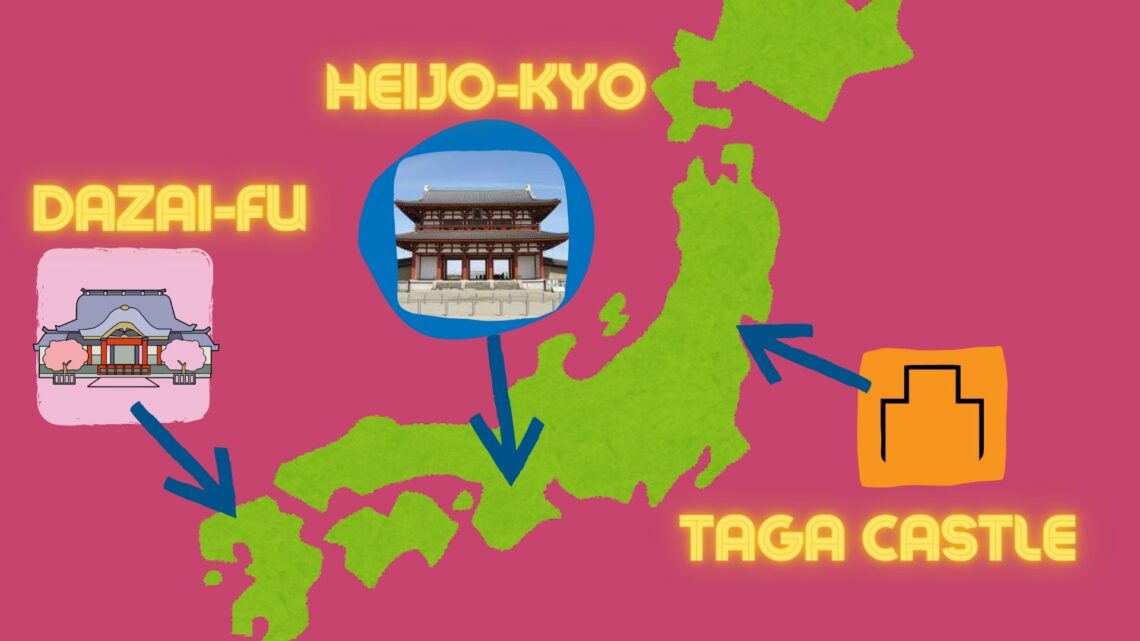
#06 The Nara Period
Click here to go to the YouTube video
Once the Ritsuryo system was in place, the government built a new capital called the Heijo-kyo in Nara. The 74 years that Heijo-kyo was the capital of Japan, starting in 710, are known as the Nara period. From Heijo Palace, where the emperor resided, a 70-meter wide Suzaku-Oji road ran north to south, dividing the capital into east and west.
Markets were set up on the east and west sides, and goods brought from various places were bought and sold using coins. The wooden tablets excavated from the Heijo Palace site show how people lived in those days.
Roads connecting the capital and the provinces were constructed, and stations with horses were also built. The Imperial Court built Taga Castle as a military base against Emishi living in the Tohoku region. It also established Dazaifu in Kyushu as a diplomatic and military base.
The imperial court issued the law of Handenshuju, which provided land to those who were six years old or older. People were required to cultivate the land, harvest rice, and pay a tax of 3% of the harvest. After dying, people had to return the land to the state.
In addition, people had to bring local specialties or linen cloth to the capital. Some men were sent to the northern Kyushu for military service, and others were sent to the northeastern part of Japan to cultivate the land. Life was very difficult for the people.
Around this time, as agricultural technology improved and the harvest increased, the population also increased. In order to motivate the people to cultivate the land, the Imperial Court issued a law in 743, which allowed the people to keep the newly cultivated land under their ownership forever.
With this law, powerful aristocrats and temples expanded their land holdings and increased their power. These private lands were called “shoen”, or manors. The aristocrats who owned large manors soon came to have a great influence on politics.
Thank you for reading!




